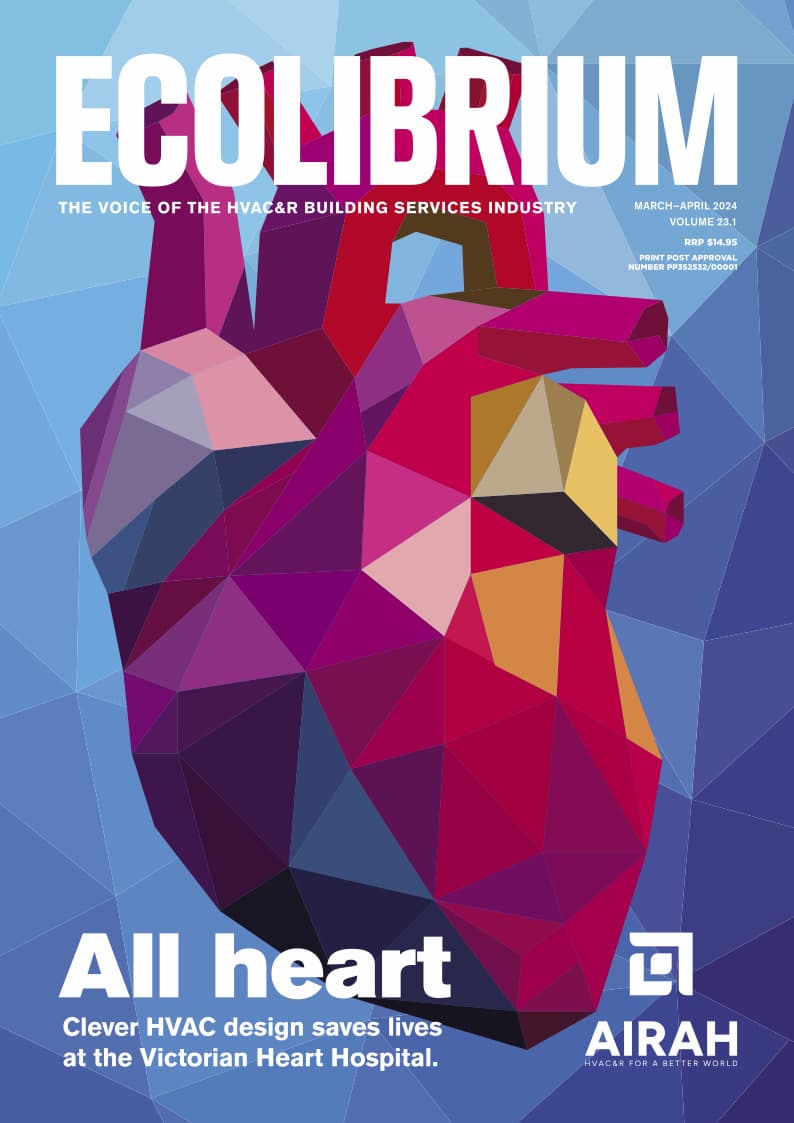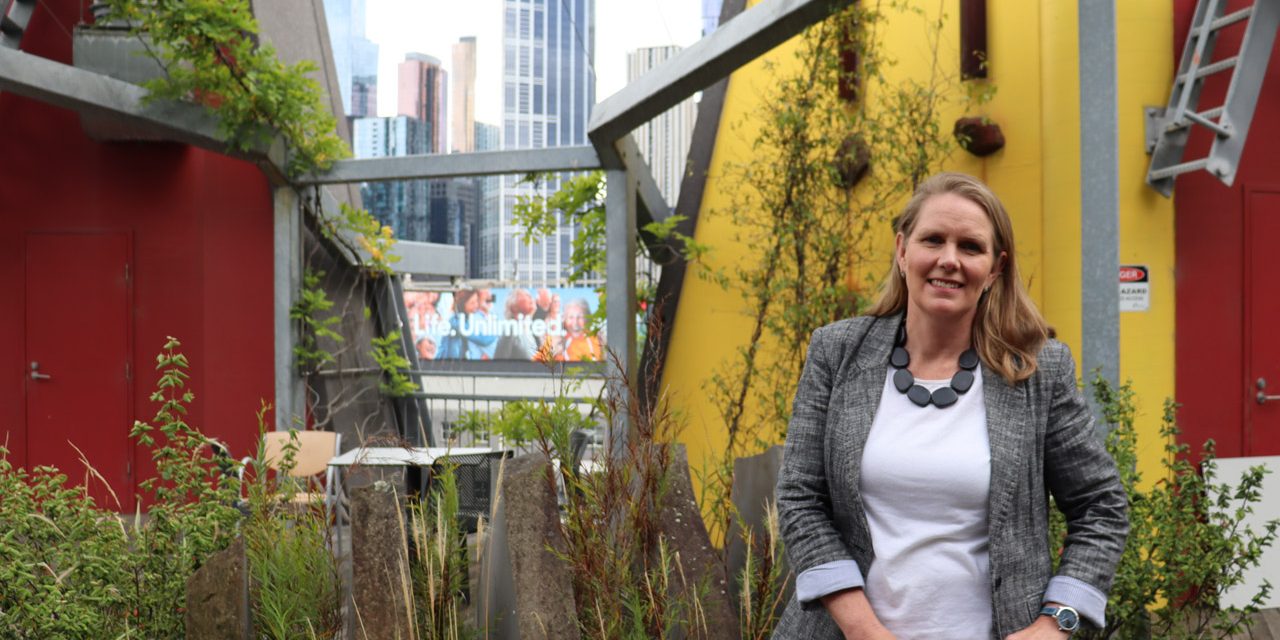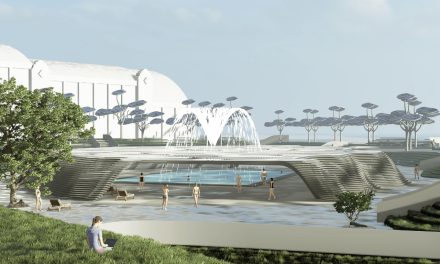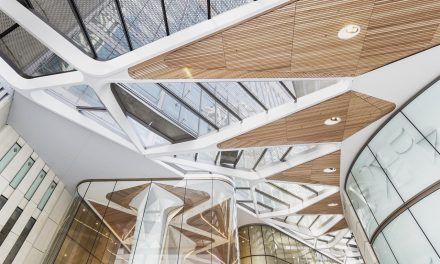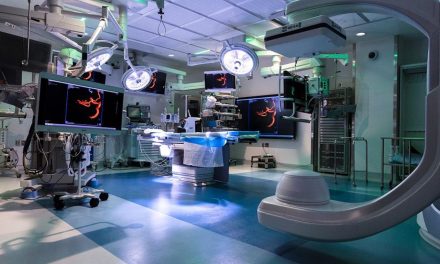City of Melbourne chief heat officer Krista Milne talks with Ecolibrium staff writer Nick Johns-Wickberg about managing extreme heat in urban settings.
As temperatures rise around the globe, cities are being disproportionately affected thanks to the urban heat island effect. The enormous thermal mass of dense buildings, pavements and roads acts almost like a radiator, amplifying already dangerous heatwaves caused or exacerbated by climate change.
Victorian government data from 2018 shows that in some urban and suburban areas of greater Melbourne, average temperatures were up to 10°C higher than those in non-urbanised areas. The common denominator in those areas? Too much development, not enough greenery.
Krista Milne is the City of Melbourne’s director of climate change and city resilience. Since 2022, she has also worked as the city’s chief heat officer, a role she shares with Tiffany Crawford. It’s her job to combat the heat island effect in Melbourne.
“Our core focus is to raise community awareness of the risks of extreme heat and prepare our city to be a cool, heat-proof city,” Milne says, “a place people can still come and go about their business even during extreme heat events.”
An unspoken danger
For Milne, who has more than 20 years of experience in sustainability with EPA Victoria and the City of Melbourne, keeping people safe during heatwaves is a key responsibility.
“The role has brought to light the significance of extreme heat for cities given that more Australians die from extreme heat than from any other natural hazard,” she says.
“Extreme heat can cause dehydration, heat stress, it can bring on heart attacks and eventually cause your body to shut down, which leads to death. But often those deaths or increased ambulance callouts aren’t recorded as being caused by extreme heat.
“There’s also quite a big lag in the data. If there’s a flood, you see the flood on the news, you see the devastation. But with heat, often the news just shows images of people going to the beach.”
Milne says that, while the community in general might not be aware of how dangerous extreme heat can be, those working in healthcare understand the risks.
“The medical community is well aware of the causal effect of heat when there’s a case presented,” Milne says. “There’s a lot of interest within the medical community about climate change. Of course, extreme heat is only going to get worse because of climate change, so I suspect that relationship and involvement with the medical community is only going to increase.
And while medical professionals can help by communicating the dangers of heatwaves to their most vulnerable patients, Milne acknowledges that it’s up to governments and councils to raise public awareness.
Heat vs the human body
Dr Federico Tartarini, Affil.AIRAH, is a senior research associate at the University of Sydney’s Heat and Health Research Incubator. He identifies five ways in which heat can damage human health:
- Heat exhaustion – when the body is exposed to heat for too long. Symptoms include weakness, nausea, headaches, and dizziness. According to Tartarini, “heat exhaustion can often be treated at home by reducing your levels of physical activity, finding shade, removing excess clothing, hydrating with water and perhaps even taking a cool shower.”
- Heat stroke – when the body’s core temperature rises above 40 C. Symptoms include confusion, disorientation, agitation, convulsions, and even coma. “Heat stroke is a medical emergency and requires urgent treatment,” Tartarini says.
- Hyperthermia – when the body absorbs or generates more heat than it can release.
- Cardiac stress – when the heart is overworked. “As blood is diverted to your skin, your heart has to pump harder to maintain blood pressure,” Tartarini says. This can trigger a heart attack in people with cardiovascular conditions.
- Renal failure – when the kidneys shut down. “As less blood flows to your kidneys, renal failure increases,” Tartarini says. “The risk is even worse when you’re dehydrated.”
According to Tartarini, the two main factors that increase vulnerability to heat are:
- Physiological limitations, such as cardiovascular disease or a decreased capacity to sweat
- A reduced capacity to adapt behaviour, as could affect people experiencing homelessness, those who don’t have adequate access to cooling at home, or those working in unsafe conditions.
“When these two risk factors coincide, it’s a perfect storm of vulnerability,” Tartarini says.
“For example, let’s consider an elderly outdoor agricultural worker. Being aged over 60, their physiological capacity to sweat is reduced. The worker may also be wearing heavy safety clothing, which may further limit heat loss from the body.
“If they don’t slow down, seek shelter and adequately hydrate, they become even more vulnerable.”
The inequities of heat
As with any health risk, heat doesn’t affect all people equally. Among the most vulnerable groups are the very young, the elderly, people living with a disability or health condition, and those experiencing homelessness.
However, as climate change causes heatwaves to become more common, even otherwise healthy people who don’t have air conditioning at home or in their workplace are at risk of suffering health consequences from extreme heat.
The City of Melbourne is running a targeted campaign to raise awareness among those likely to be most affected.
“We’re handing out cool kits and running information sessions, especially for vulnerable communities to help them understand what to do and how to prepare for heat,” Milne says.
“Everyone’s vulnerable in a heatwave, but those with existing conditions and those who can’t seek refuge in their house – maybe they can’t afford air conditioning – will be the target of those information sessions on how to stay cool.”
The campaign also has a more practical element. The council has identified air conditioned public buildings and shaded outdoor areas as refuges where people can head during extreme heat events.
“We’ll be activating cool places during a heatwave to ensure that they have food and water available,” Milne says. “We have developed an interactive map of cool places around the municipality, including our parks, libraries, recreation centres, movie theatres, shopping centres, and even drinking fountains.
“We have a cool routes tool, which is a bit like Google Maps. You plug in where you want to go, from A to B, and it takes you through the coolest way, rather than the fastest way, using shaded areas, tree-lined streets, and through our magical laneways.”
Future-proofing the city
“There’s a famous quote: The best time to plant a tree is yesterday,” Milne says. “For us to ensure that Melbourne is a cool refuge in 20 years, the time to act is now.”
This isn’t just a poetic metaphor; according to a 2020 study by the ACT government, shade from trees can cool air temperature by 6–10°C. The same study estimates that each tree provides an “amenity value” of around $10,600.
The City of Melbourne’s approach to future planning also places a high value on urban trees.
“Since our learnings from the millennium drought, we’ve been really focused on enhancing and protecting our urban forest,” Milne says. “We plant over 3,000 trees per year to continue growing our urban forest, targeting 40 per cent canopy cover across the city.”
But in a densely populated urban area such as the Melbourne, finding the space to plant more trees is difficult.
“You can’t plant a tree everywhere, so it’s really thinking about our public realm,” Milne says. “How do we bring water back to public spaces? And how do we introduce other forms of shading if it’s not possible to plant a tree?
“We’re working with RMIT University this year to do some thermal mapping of the city and explore other types of shading to help reduce temperatures where we’re unable to shade using urban greening.”
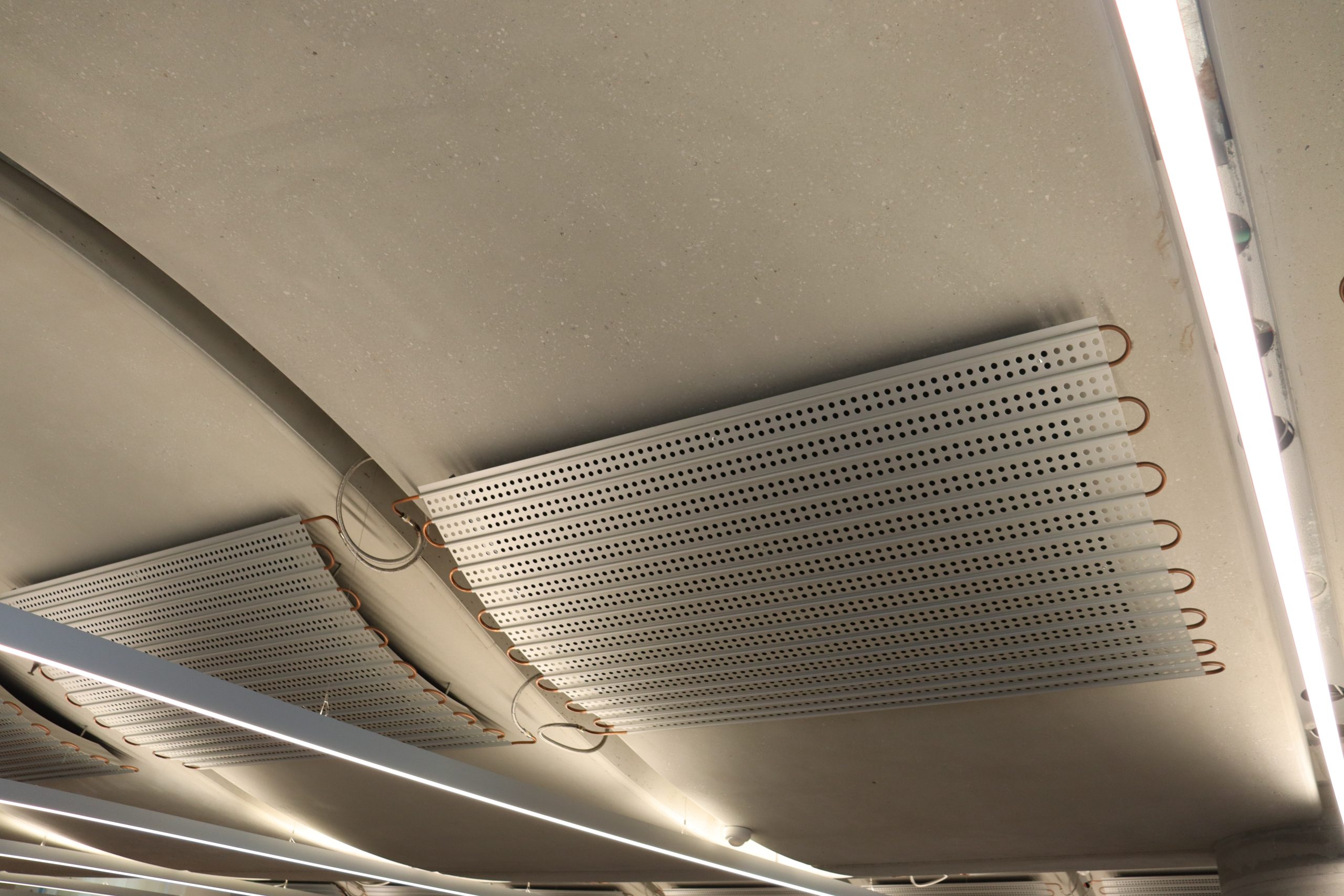
The City of Melbourne’s CH2 building boasts tech such as chilled beams and wavy concrete ceilings.
Bright future
Some City of Melbourne future-proofing projects include:
- The greenline, a “once-in-a-generation infrastructure project” that will see trees and park spaces added to the north bank of the Yarra River to return the natural ecosystem to the riverbank, provide cool refuges, and combat the urban heat island effect
- The Urban Forest Fund, a funding-match scheme that allows property owners and developers to split greening costs with the council
- Small-scale urban greening, including greening laneways, putting understory in the city, and capturing and using water in a smart way to keep plants alive during dry times.
A global effort
The movement to appoint chief heat officers is a relatively new one led by the Adrienne Arsht-Rockefeller Foundation Resilience Center. Melbourne is one of six cities from each continent to take part in the program, alongside Freetown (Sierra Leone), Dhaka (Bangladesh), Athens (Greece), Miami (USA), and Santiago de Chile.
Milne believes that many other local councils – both in Victoria and around the country – are looking to appoint officers in charge of heat management, and to implement similar strategies.
“Councils are increasingly focusing on the issue of extreme heat,” she says. “In Melbourne there is an organisation called Sweltering Cities that is coordinating a greater metropolitan heat alliance, and a lot of the members of that alliance are councils.
“Whether they call it a chief heat officer or a climate resilience officer, what I’m seeing is an increased focus on extreme heat.”
With temperatures set to rise for the foreseeable future, those living in Australia’s cities will surely hope that these measures make a difference.
The importance of sustainable cooling
City of Melbourne chief heat officer Krista Milne says the HVAC&R industry will be a key player in Australia’s transition towards net zero emissions. Just as importantly, the industry will play a major role in keeping people cool as temperatures rise.
“Given the increased heat from climate change, we’re going to need cooling, and the industry needs to play a role in that,” Milne says.
“Air conditioning and other sorts of cooling technologies are an essential part of the solution. Clearly, we’re in this situation because of emissions from energy use and burning fossil fuel, so it’s important for the HVAC&R industry to focus on developing and using the best, most efficient and fit-for-purpose technology, as they do.”
Milne adds that, while supplemental cooling is important, designing buildings that are thermally comfortable, well insulated, and have a minimum need for cooling is the goal.
“We want to see innovative solutions to make sure we’re building buildings that are cool and have the most efficient electric cooling systems powered by renewable energy,” she says. “There’s a great role for the HVAC&R industry to support innovation in technology and training to ensure that we’re installing and using the right sized and most efficient equipment, not replacing like for like.”
The City of Melbourne’s Council House 2 (CH2) building is one example of future-ready design. The first 6-star Green Star building in Australia, CH2 uses natural ventilation, shading, and insulation to keep cool during summer and warm during winter, with almost no need for additional climate control.
Of course, it’s neither sustainable nor practical to knock down otherwise functional buildings and replace them with high-tech ones like CH2. Milne highlights the need for retrofitting existing buildings, with HVAC&R systems being among the most important components of that work.
“Existing buildings are one of our biggest challenges, and that’s an area where the HVAC&R industry has played a role throughout,” she says. “There are currently about seven buildings per year in Melbourne being retrofitted for improved energy efficiency and sustainability, and if we’re going to achieve the City of Melbourne’s zero-carbon targets by 2040, we’re going to need about 80 buildings per year retrofitted.”
